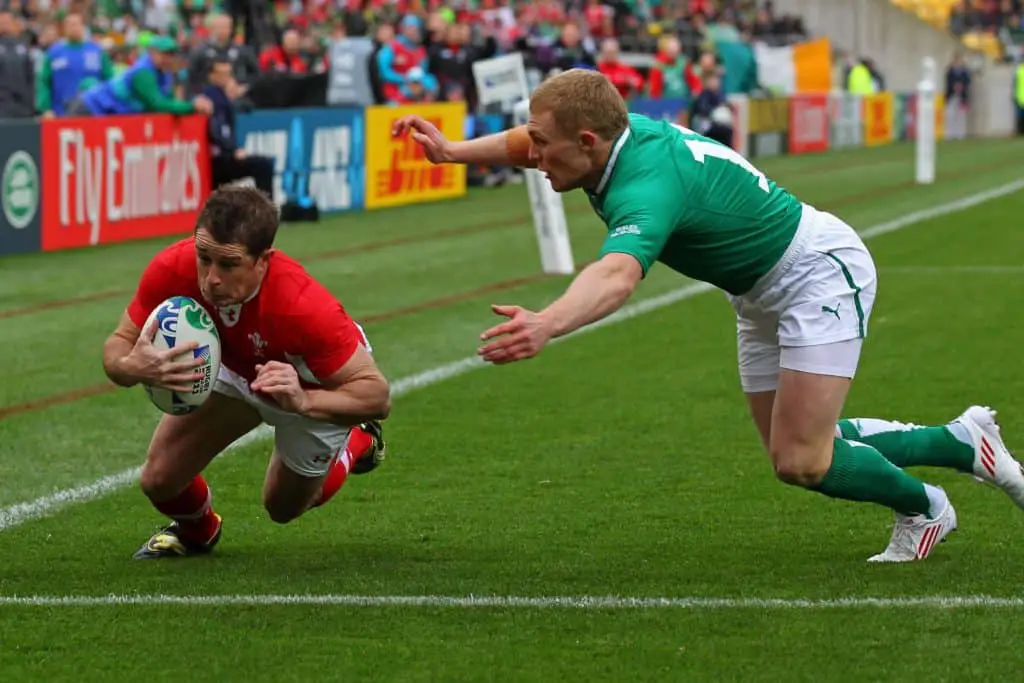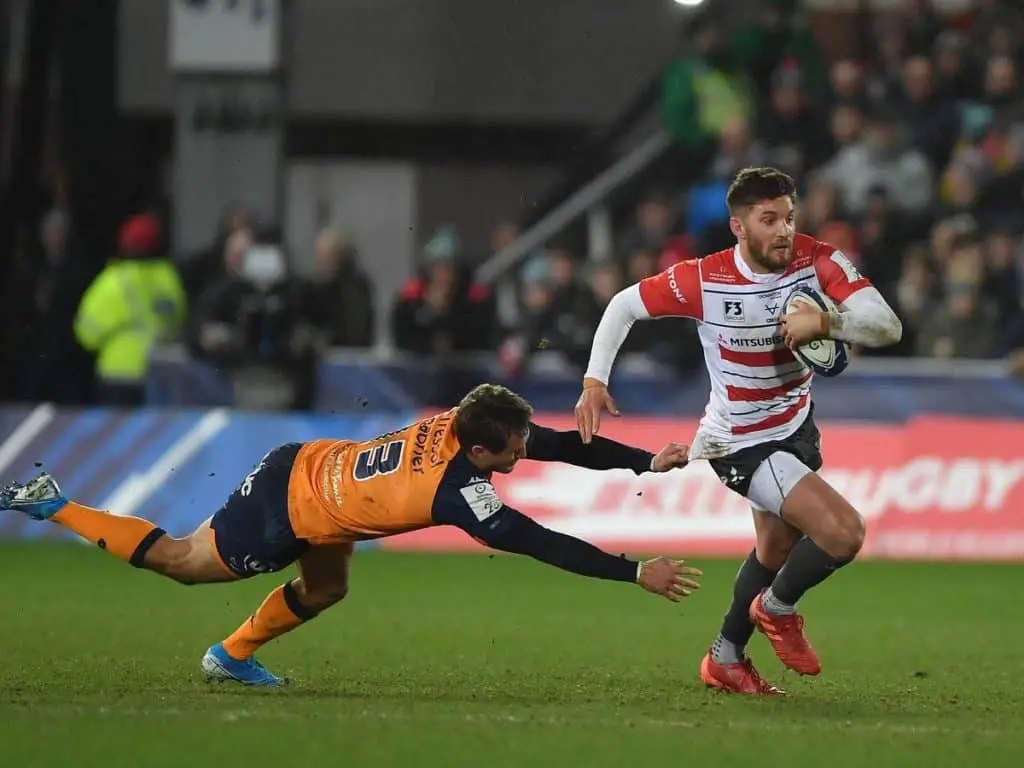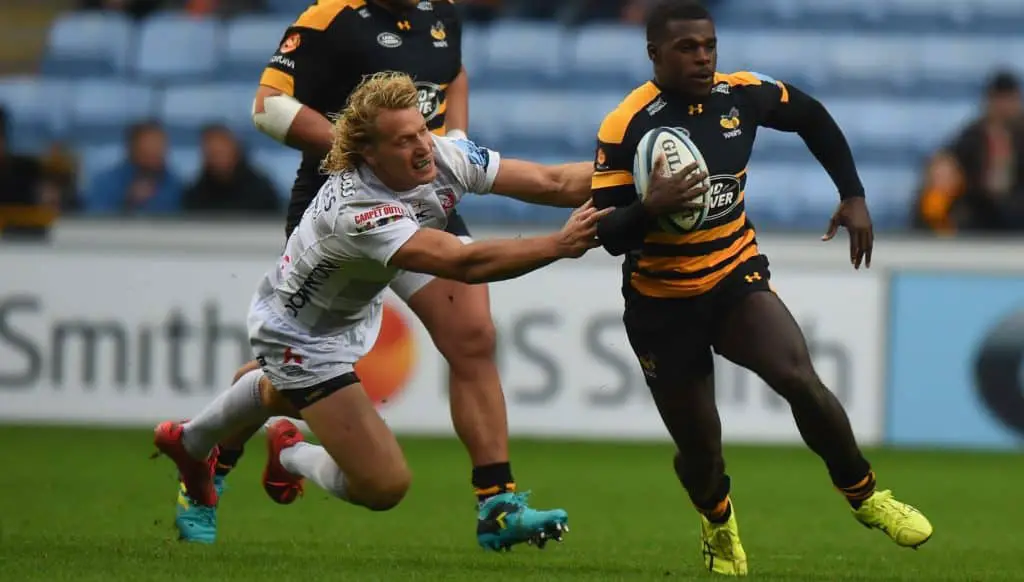
Rugby is a game made up of 15 unique positions. The players who occupy these positions each have their own individualised roles. A rugby team works similarly to a company where each team member is responsible for certain tasks.
For example certain rugby players may never kick the ball their entire rugby careers while other players are expected to kick the ball multiple times a game. In this article we will explore what the role of a winger is in rugby?
What does a winger do in rugby?
A winger in rugby is expected to make line breaks down the sidelines, be an explosive and fast ball runner in open field and be a rugby side’s number one try scoring option. Wingers are positioned near the touch line and take advantage of an outnumbered defensive line by scoring tries in the corner.

A winger’s primary role in rugby is to be an explosive openfield ball runner. A winger is usually a rugby team’s best attacking option. A winger is positioned on the side of the rugby field near the touchline. From here they often run onto the ball from a deep position before catching the ball at full speed and take advantage of the stretched defensive line.
Wingers are expected to be capable of making line breaks, going for long runs down the sideline and scoring long range tries for their rugby teams.
A typical situation in a rugby game is when an opposition side will be short numbers in their defensive line due to players being caught out of position, being trapped in a ruck or a ball runner attracting multiple defenders. When this happens the attacking side will quickly pass the ball out wide to their wingers who will be unmarked and have open space in front them, allowing them to sprint down the sideline and score.
As wingers are a rugby team’s number 1 attacking option they need to be explosive, agile, have lightning acceleration and maintain that top line speed over 40 and 60m. Wingers are typically the fastest players on the rugby pitch.
As wingers are usually running with the ball in open field and in 1 on 1 situations with the opposition they need to have a great step and change of pace which helps them beat defenders and make line breaks.

As wingers are the sprinters on the rugby field they have very different physiques to some of the other players on the team. While the average prop is 6ft 1 and weighs 118kg and the average lock is 6ft6 and 117kg, the average winger is typically between 5ft 10 and 6ft and weighs between 85 and 95kg.
Wingers still need to be strong and powerful to handle the contact of rugby so they tend to have higher muscle mass than sprinters but any excess weight or height just slows them down and negatively affects the agility needed to swerve and outpace defenders resulting in their weight being significantly less than the average rugby player.
Even though the primary responsibility of wingers is to run with the ball in the open field and score tries they do have other roles. In defense wingers will typically mark their opposition winger on the sideline. This is no easy task as they will often have to make open field tackles on wingers who are sprinting at full speed.
Wingers are often masters at implementing the sliding defense. They will mark the inside shoulder of their opposing winger and slide to the outside in an attempt to force their opposition number to the sideline where they then can force them over the touchline and win the ball for their team.
Wingers also need to be able to push up hard in defense. The speed of wingers helps in this situation as they must sprint up and close the space between them and their opposing winger. The more room a winger gives his opposing number the harder it is to tackle them.

When a winger has space they are able to reach their top speed and use their steps and change of pace to beat defenders. These methods can be nullified if a winger in defense is able to quickly close the space and tackle his opposing number just as they are receiving the ball.
Wingers will also drop back in defense to cover kicks and to provide cover defense if the opposition side is able to make a linebreak in the middle or outer edge of the field. The scene of a winger running down a rampaging forward who managed to break the defensive line is a common scene on the rugby field.
As wingers often drop back to retrieve the ball after the attacking side has kicked it down field they need to be able to kick the ball themselves. Often they will find themselves collecting a kicked ball with no teammates around them to help them out. In this situation they will be forced to kick the ball otherwise they risk being isolated and giving up a turnover.
Some wingers get away with their poor kicking ability because usually the fullback or their winger partner will also drop back to help them receive a ball. If a winger can’t kick they will pass to their teammates who will punt the ball down the field.

Wingers are try scoring machines. They are expected to be speedsters who are capable of leaving defenders in their dust with their pace and eating dirt with their stepping abilities. Wingers play wide, close to the sideline and at home running down the sideline or in open play where they can show off their speed.
In defense wingers will mark their opposing number along the sideline and also drop back in defense to either gather the ball after it has been kicked or to provide cover defense if an attacking player has made a break up the middle of the field.
